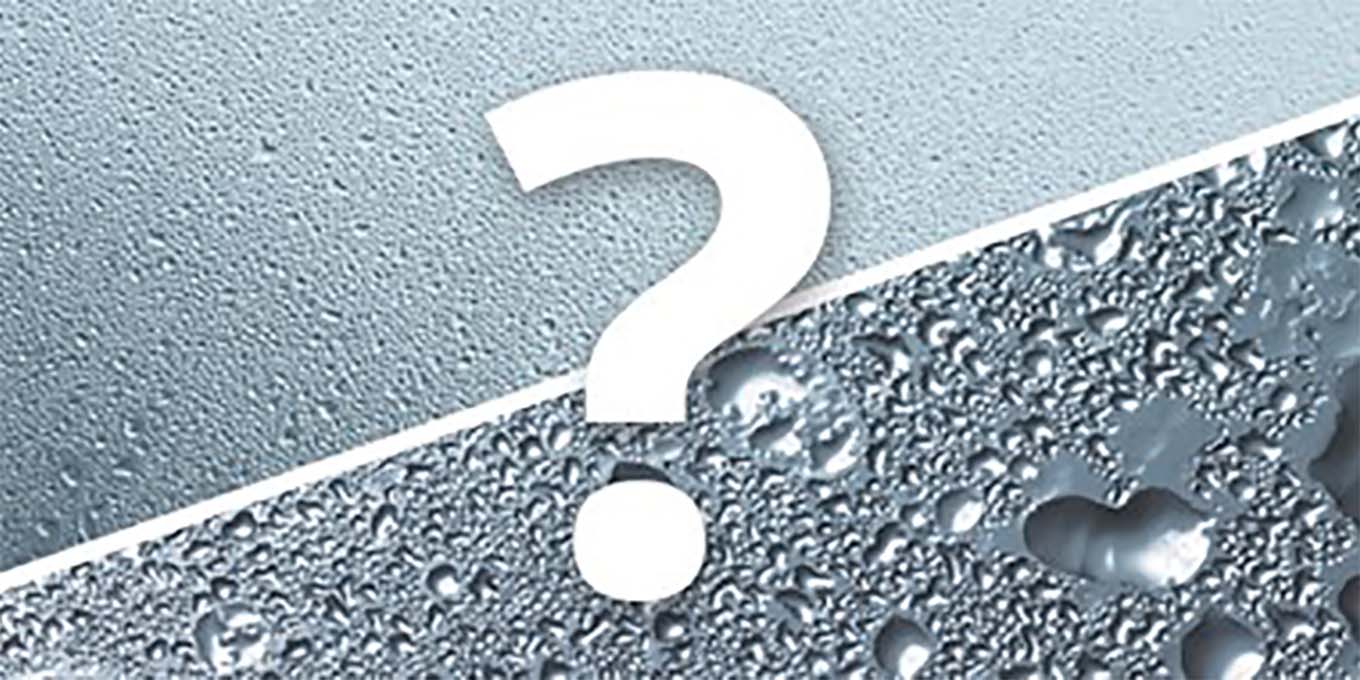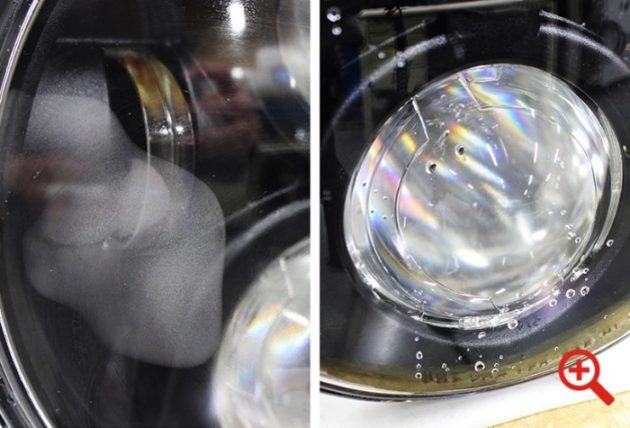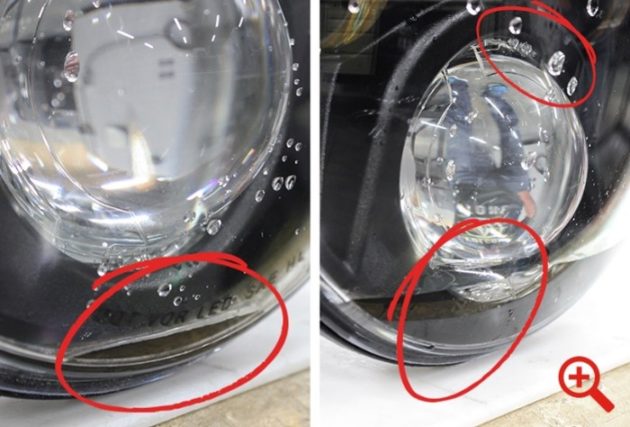
Condensation in headlights – a disadvantage of modern LED technology?
published on 11. February 2021
Visible water behind the lens? Steam in the housing?
Everyone has seen water or steam in headlight housings. The logical assumption is that the light is simply leaking and therefore defective. But this is not necessarily the right explanation, because even high-quality lights with a high structural tightness can show this effect. Especially with modern LED headlights, this seems to occur more frequently.
But is this really the case? And does this automatically mean that there is damage? To answer these questions, we need to take a closer look at a few aspects of this phenomenon.

Steam or small drops of water indicate condensation.
Even the highest sealing allows replacement
Well, for that you should first know that even headlights sealed to the highest standard are not hermetically sealed. The highest sealing class IP69K merely means that water cannot get into the light even under high pressure, such as during cleaning with a high-pressure or steam cleaner.
However, there are two things to keep in mind. Firstly, headlights are not produced under air seal, so even in a sealed housing there is always air. And air always contains water vapour, sometimes more, sometimes less, depending on temperature and region. Secondly, even in sealed housings there is an exchange with the atmosphere over the long term. Most headlights even have very small vents in their housing for this very purpose, but they are sealed with Goretex© membranes, for example, to be armed against high-pressure and steam cleaners. A slow exchange of gases will nevertheless take place over time.

Only very clear accumulations of water indicate a leak.
Even sealed headlights “breathe”!
Another aspect is that the inner workings (lenses, covers, etc.) and also the lenses of modern headlights are increasingly made of plastics. However, plastics are always hygroscopic. This means that these materials can and do absorb and release water from the environment. In short, they breathe.
And if you now also consider that water vapor has the property of condensing in cool places, you are very close to explaining the visible water. The coolest part of a headlamp is usually the front lens facing the surroundings. So it is not surprising that condensation water can be found there from time to time. And this is the case in every headlight, whether LED, xenon or halogen. But the question is why this seems to occur more frequently in LED headlights.
The disadvantage of good energy efficiency
There is a relatively obvious answer here. Headlights with conventional lighting technology (halogen or xenon) work significantly less efficiently than modern LED headlights. This means that a relatively large proportion of the energy absorbed is not released as light but as heat. This heat is mainly radiated directly to the front, i.e. onto and through the front lens. This means that it heats up and prevents condensation during operation. After switching off, however, clearly visible condensation can often appear in conventional lights as well. Just not during operation, when you notice it.
The good energy efficiency of modern LED headlights therefore actually seems to be a disadvantage here during operation, as less energy is “wasted” and radiated as heat. In direct comparison, the front lenses of LED headlights remain significantly cooler than those of halogen or xenon headlights, so condensation can be observed more frequently. But it is only observed, it is still not more frequent.
Conclusion:
In short, condensation in headlights does not indicate damage. Even sealed headlights contain residual moisture due to normal humidity during production. In addition, even completely sealed housings “breathe,” so that over time, there is still an exchange with the outside air, albeit at a slower rate.
tagged with Headlights, LED lighting, Maintenance, Technology



